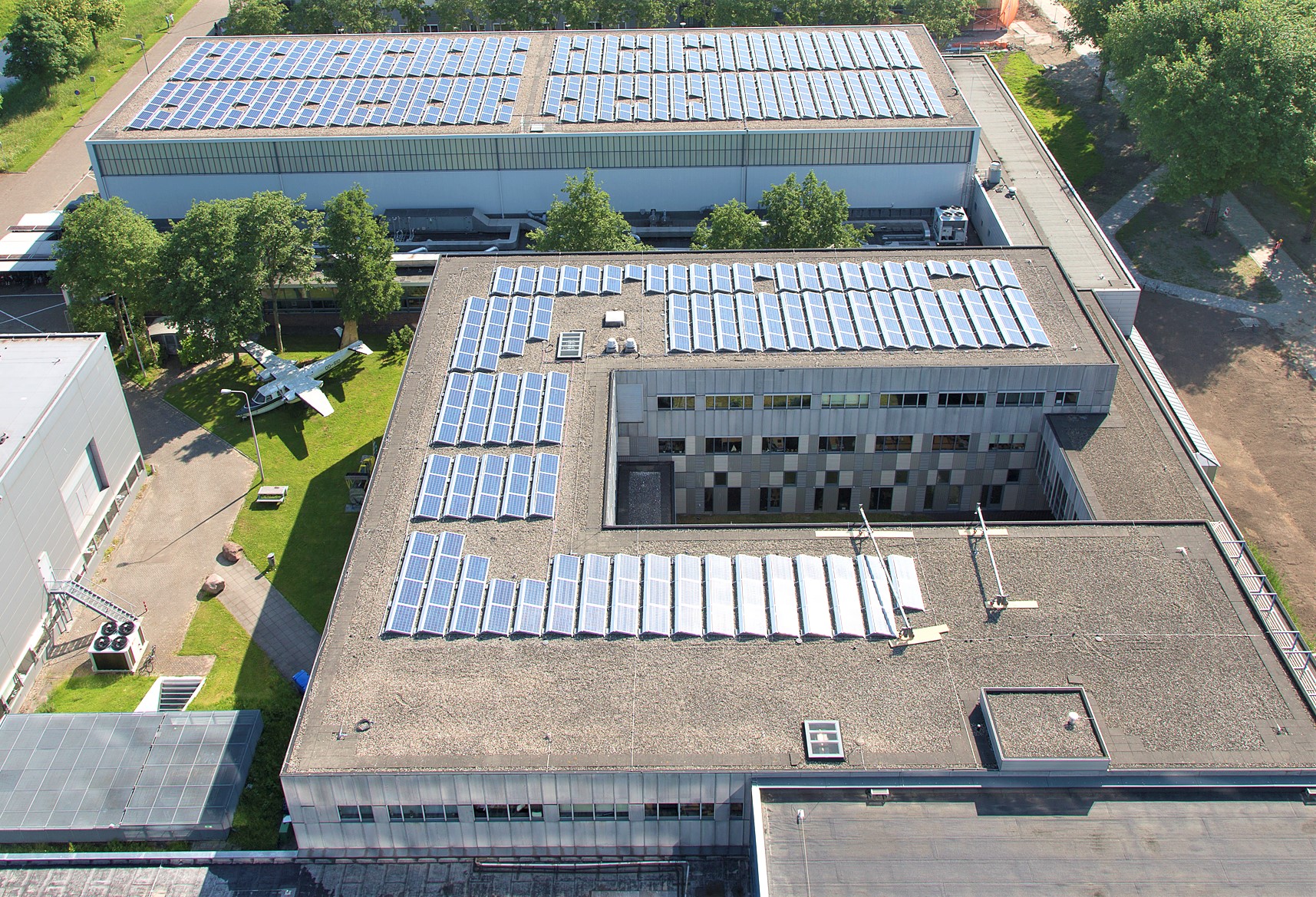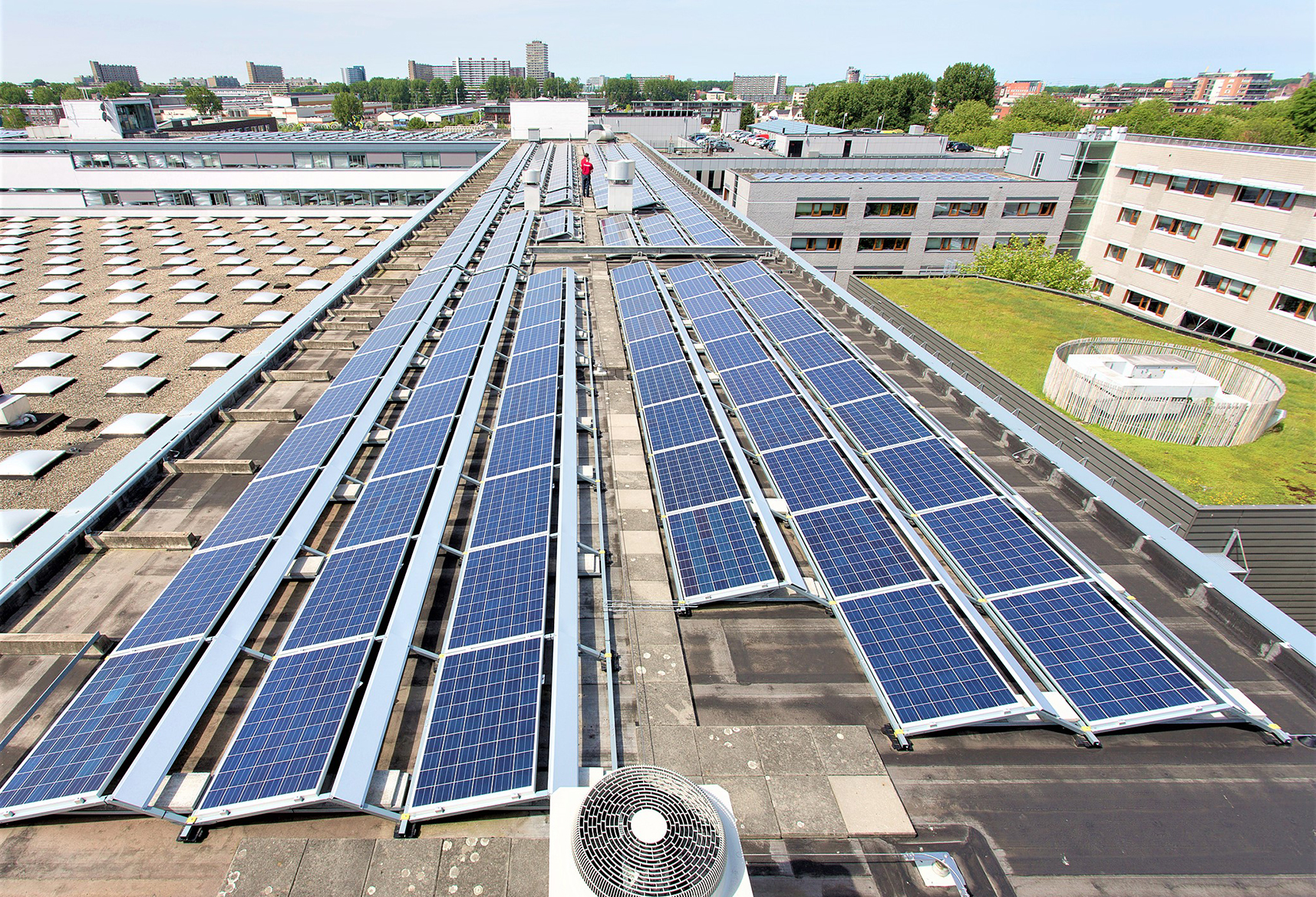Generating our own energy with 4,000 solar panels
TU Delft ultimately aims to generate 50% of its energy itself. When it comes to electricity, solar panels (photovoltaic or “PV” panels) offer an attractive solution. It is easy to combine such panels with existing buildings and facilities. Solar panels are currently being installed on the flat roofs of buildings. However, the quality of solar cells – which can be integrated into walls, windows and window frames – is improving steadily, and they are getting cheaper. This means opportunities for the future.
There are some 4,000 solar panels on the roofs of twelve buildings on campus. They have a joint capacity of 1.1 megawatts and generate an average of 900 megawatt hours a year. However, even if solar panels were installed on the roofs of all buildings on campus, it would still not be possible to achieve the ultimate goal of generating 50% of all required energy using PV panels alone.
That being said, electricity from solar energy still appears to be the best approach to make TU Delft 50% self-supporting. As mentioned above, techniques for integrating solar cells into a range of materials and parts of buildings, such as windows, roof coverings and cladding, are constantly improving. The latest developments also mean that the cells no longer have to be south-facing; they can generate energy irrespective of which point of the compass they are facing. And panels are also ever getting cheaper.
Check here to see how much energy the solar panels at TU Delft are currently generating. You can also see the lifetime yield and the corresponding CO2 reduction.
Developments are rapid, so it may be possible for TU Delft to introduce other sustainable technologies in the future. Generally speaking, more space is required for wind turbines, and that kind of space is not available on campus. However, research is being conducted into the introduction of small, efficient wind turbines. Since January 2017, it has been TU Delft policy only to purchase sustainable Dutch electricity, generated by wind turbines off the coast of the Netherlands.
Pulse
Solar panels are also installed on the roof of Pulse, the energy-neutral teaching building (building number 33a). The 490 panels (750 m2), generate 150,000 kWh per annum. They generate sufficient energy to supply the whole building with electricity.


